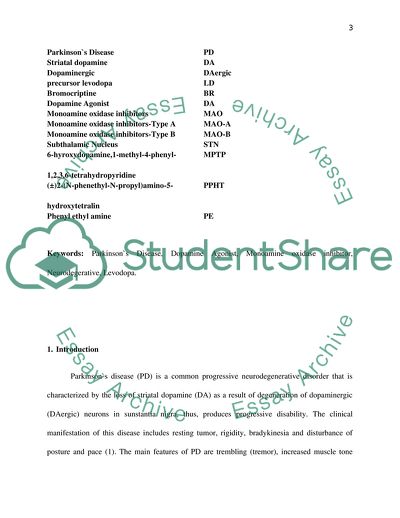Cite this document
(Whether Dopamine Agonists and Monoamine Oxidase Inhibitors Are Research Paper, n.d.)
Whether Dopamine Agonists and Monoamine Oxidase Inhibitors Are Research Paper. Retrieved from https://studentshare.org/medical-science/1713014-what-is-the-evidence-for-and-against-the-claim-that-dopamine-agonists-and-monoamine-oxidase-inhibitors-are-neuroprotective-in-patients-with-parkinsons-disease
Whether Dopamine Agonists and Monoamine Oxidase Inhibitors Are Research Paper. Retrieved from https://studentshare.org/medical-science/1713014-what-is-the-evidence-for-and-against-the-claim-that-dopamine-agonists-and-monoamine-oxidase-inhibitors-are-neuroprotective-in-patients-with-parkinsons-disease
(Whether Dopamine Agonists and Monoamine Oxidase Inhibitors Are Research Paper)
Whether Dopamine Agonists and Monoamine Oxidase Inhibitors Are Research Paper. https://studentshare.org/medical-science/1713014-what-is-the-evidence-for-and-against-the-claim-that-dopamine-agonists-and-monoamine-oxidase-inhibitors-are-neuroprotective-in-patients-with-parkinsons-disease.
Whether Dopamine Agonists and Monoamine Oxidase Inhibitors Are Research Paper. https://studentshare.org/medical-science/1713014-what-is-the-evidence-for-and-against-the-claim-that-dopamine-agonists-and-monoamine-oxidase-inhibitors-are-neuroprotective-in-patients-with-parkinsons-disease.
“Whether Dopamine Agonists and Monoamine Oxidase Inhibitors Are Research Paper”. https://studentshare.org/medical-science/1713014-what-is-the-evidence-for-and-against-the-claim-that-dopamine-agonists-and-monoamine-oxidase-inhibitors-are-neuroprotective-in-patients-with-parkinsons-disease.


